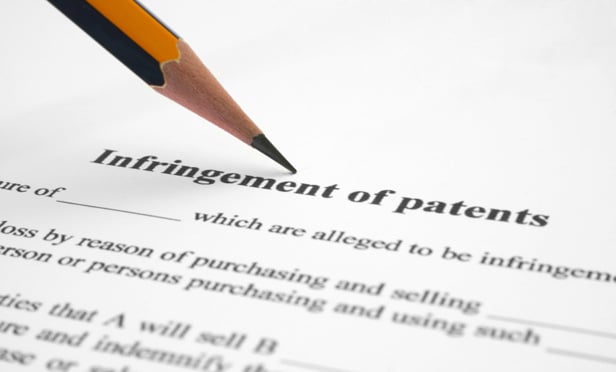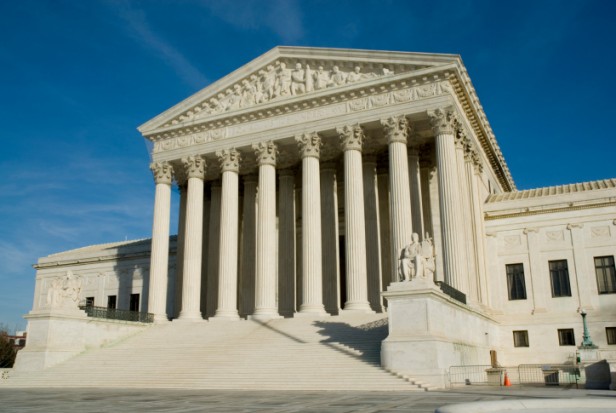Features

Supreme Court Limits Patent Liability for Component Makers in Global Supply Chain
<b><i>Life Technologies v. Promega</b></i><br>In a decision that should please American manufacturers that feed into the global supply chain, the U.S. Supreme Court has narrowly interpreted a 33-year-old law that imposes patent liability on components made in the U.S. for assembly overseas.
Features

How Much Did the Federal Circuit Narrow Eligibility for Covered Business Method Review?
In November of last year, the Federal Circuit narrowed the types of patents eligible for covered business method review in <i>Unwired Planet, LLC v. Google Inc.</i> The court's decision narrowed what patents are eligible for CBM review, and provided some guidance for future cases.
Features

Amending Patent Claims in Post-Grant Trial Proceedings
<b><i>What You Need to Know</i></b><br>The America Invents Act gave patent owners the right to move to amend their patent claims. To date, however, this right has been more illusory than real. Given their dismal success rate so far, many hope that the tide will turn in favor of granting more motions to amend.
Features

Joint Infringement Post-Akamai: Understanding the Impact on Prosecution and Litigation Strategies<br><font size="-1"><b><i>Part 2: Decisions Since</i> Akamai <i>and Practice Insights</b></i></font>
Reviews the recent Federal Circuit <i>Eli Lilly</i> case as well as district court cases that have interpreted the new standard and identifies prosecution and litigation strategies for practicing post-<i>Akamai</i><p>
Features

Joint Infringement Post-Akamai: Understanding the Impact on Prosecution and Litigation Strategies
This two-part article aims to deconstruct the new joint infringement standard, provide insight into how the standard might be interpreted and provide practice tips for prosecution and litigation. Part 1 chronicles the <i>Akamai</i> cases that ultimately resulted in a new standard for joint infringement and explores the potential interpretations of that standard.
Features

Design Patent Damage Awards
<b><i>Rotten for Apple</b></i><p>On Dec. 6, 2017, the United States Supreme Court, hearing its first design patent case in over 120 years, unanimously threw away a $400 million award that Apple won against Samsung Electronics. In doing so, the justices interpreted an 1887 statute providing that it is unlawful to manufacture or sell an "article of manufacture" that a patented design or colorable imitation has been applied.
Features

Supreme Court Rules on Design Patent Damages<br><i>Samsung Electronics Co. Ltd. et al. v. Apple Inc.</i>
On Dec. 6, 2016, the U.S. Supreme Court threw out a damages award of $399 million that Apple won against Samsung in an ongoing design patent dispute.
Features

<b><i>BREAKING NEWS</b></i><br>Supreme Court Agrees to Hear Blockbuster Patent Venue Case
In a win for the tech industry, the U.S. Supreme Court agreed on Dec. 14 to hear a case that could move patent cases out of the Eastern District of Texas.
Features

<b><i>Online Extra</b></i><br>Apple Loses to Samsung in Supreme Court Design Patent Case
The U.S. Supreme Court unanimously ruled in favor of Samsung Electronics on Dec. 6 in its titanic patent dispute with Apple Inc. over design features copied from Apple iPhones.
Features

Expanded Means-Plus-Function Analysis Presents New Opportunities and Challenges
The Federal Circuit's <i>en banc</i> decision in <i>Williamson v. Citrix Online</i> expanded the potential application of 35 U.S.C. §112, ¶6, making it more likely that functional claim language will be construed as a means-plus-function limitation even in the absence of the word "means." This article discusses recent decisions applying <i>Williamson</i> and provides practical insights and strategies for patent owners and accused infringers to consider when addressing the expanded application of §112, ¶6.
Need Help?
- Prefer an IP authenticated environment? Request a transition or call 800-756-8993.
- Need other assistance? email Customer Service or call 1-877-256-2472.
MOST POPULAR STORIES
- Bankruptcy Sales: Finding a Diamond In the RoughThere is no efficient market for the sale of bankruptcy assets. Inefficient markets yield a transactional drag, potentially dampening the ability of debtors and trustees to maximize value for creditors. This article identifies ways in which investors may more easily discover bankruptcy asset sales.Read More ›
- Structuring Strategies for Off-Balance-Sheet Treatment of Real Property LeasesThe Financial Accounting Standards Board released a new set of lease accounting standards, ASC 842, which went into effect earlier this year. Most significantly, publicly traded companies are now obligated to list all leases of 12 months or longer on their balance sheets as both assets and liabilities. Large private companies will follow suit in 2020.Read More ›
- Judge Rules Shaquille O'Neal Will Face Securities Lawsuit for Promotion, Sale of NFTsA federal district court in Miami, FL, has ruled that former National Basketball Association star Shaquille O'Neal will have to face a lawsuit over his promotion of unregistered securities in the form of cryptocurrency tokens and that he was a "seller" of these unregistered securities.Read More ›
- Compliance Officers and Law Enforcement: Friends or Foes?<b><i>Part Two of a Two-Part Article</b></i><p>As we saw in Part One, regulators have recently shown a tendency to focus on compliance officers who they deem to have failed to ensure that the compliance and anti-money laundering (AML) programs that they oversee adequately prevented corporate wrongdoing, and there are several indications that regulators will continue to target compliance officers in 2018 in actions focused on Bank Secrecy Act/AML compliance.Read More ›
- The DOJ's New Parameters for Evaluating Corporate Compliance ProgramsThe parameters set forth in the DOJ's memorandum have implications not only for the government's evaluation of compliance programs in the context of criminal charging decisions, but also for how defense counsel structure their conference-room advocacy seeking declinations or lesser sanctions in both criminal and civil investigations.Read More ›
